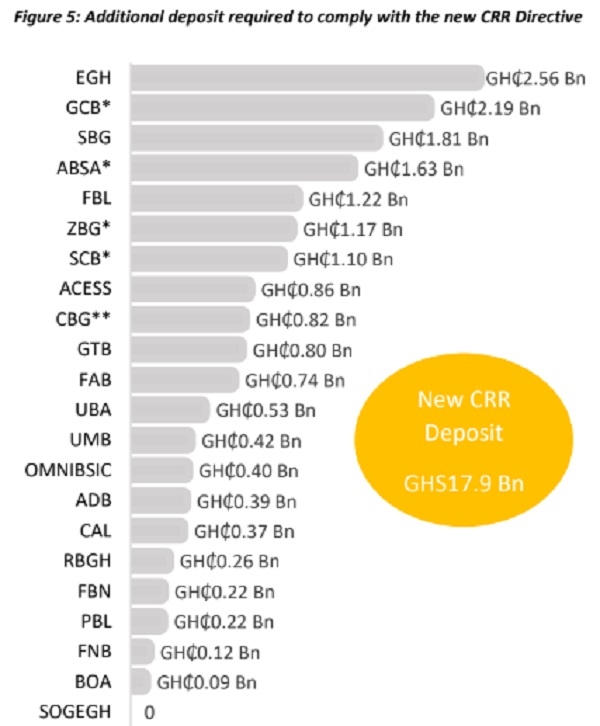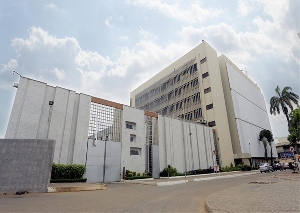The real sector – businesses and households in the country – could be set for a significant boost with loans and advances extended to them potentially growing by as much as GH¢49billion as a result of the new directive by the Bank of Ghana (BoG), analysis by GCB Capital has shown.
This policy shift, implemented through a tiered Cash Reserve Ratio (CRR) system, aims to incentivise banks to increase lending activity and unlock much-needed capital for economic growth.
Previously, banks had favoured low-risk investments, especially Treasury bills (T-Bills) due to a heightened risk-averseness, a posture which many had decried as ‘lazy banking’.
This cautious approach resulted in sluggish credit growth despite strong deposit levels.
Following the latest Monetary Policy Committee (MPC) meetings, Governor of the central bank Dr. Ernest Addison revealed that as of February 2024, private sector credit growth stood at 5.1 percent, a significant drop from the 29.5 percent growth seen in February 2023. Conversely, banks’ investments in Treasury instruments reached GH¢53.6billion by February 2024, marking a 67.6 percent increase year-on-year, compared to a 36.9 percent increase in the same period of 2023. In actual terms, private sector credit decreased by 14.7 percent.
This came despite banks experiencing a surge in deposits in the wake of the Domestic Debt Exchange Programme (DDEP). The latest banking sector data indicates a YoY deposit growth of 25.5 percent in February 2024, reaching GH¢224.4billion, which is an increase of GH¢45.6billion.
Consequently, businesses struggled to access financing for expansion or even day-to-day operations, while households grappling with rising costs found loan applications met with resistance.
However, the new CRR system introduces a tiered structure, with banks maintaining a lower CRR – essentially holding less money in reserves – if they demonstrate a higher loan-to-deposit (L/D) ratio. This incentivises banks to lend more, potentially freeing up a significant amount of capital for new loans.
Explaining the implications, Courage Boti, Research Lead at GCB Capital, said banks are faced with extending an additional GH¢49billion in credit or keeping as much as GH¢17.9billion with the apex bank.
“Using the latest available numbers, the 22 banks will be required to grow their loan portfolio by about GH¢49billion to avoid keeping an additional GH¢17.9billion with the Bank of Ghana in keeping with the new directive,” he said, citing an analysis of all the banks in the country except the National Investment Bank (NIB).
The impact of this policy shift could be multi-faceted. Businesses across various sectors – agriculture, industry and services – are expected to benefit the most.
“Key players should position themselves to tap into this anticipated credit growth… This could lead to a timely boost for economic activity and new investments, potentially creating jobs and stimulating overall growth,” Mr. Boti remarked.
He added this could see lending rates drop from the average of 32.8 percent recorded in February 2024.
The hard way now the only way
Despite the positive projections, GCB Capital cautioned that the road to economic recovery might not be entirely smooth. Banks, it says, might become more selective in their lending practices, prioritising blue-chip companies with a proven track record over smaller businesses or start-ups perceived as higher risk. This could exacerbate existing inequalities in access to credit.
“We expect loan book expansion to be gradual. Banks will need to balance the potential for increased profits with the need to preserve capital and restore capital adequacy ratios that might have been impacted by non-performing loans,” Mr. Boti explained.
“Given the uncertain operating environment and the rising NPL levels, this is a tough task, potentially signalling the end of an era of ‘free cash’ for banks from passive investment in attractively priced money market instruments, particularly as the strong rebound in profitability in 2023 was mainly driven by investments. Banks may now earn profit ‘the hard way’ through credit creation,” he further elaborated.

Source: GCB Capital
Counter-intuitive
In his commentary on the MPC decision, the Director of Research at the Institute of Economic Affairs, Ghana (IEA), Dr. John Kwakye, warned that the move could be counterproductive as banks would translate the cost of the redundant funds to the consumer.
He argued that the growth in money supply was primarily a function of the BoG’s financing of the budget deficit and suggested that banks should earn interest on their idle deposits.
“The cash reserve ratio serves two purposes – a monetary control purpose and a prudential purpose; to ensure banks can meet their obligations. We are using the CRR and MPR as monetary control instruments. These are not the solutions to the problem. BoG contributed to the excess liquidity due to the monetary financing of the budget and, then, you turn around to mop the excess liquidity through very high interest rates and very high reserve requirements. It is too much and when you do that… the central bank is not paying interest on it.
“I would even advise that they pay interest on it because it is a cost to the bank, and what do you expect the bank to do? They will increase their lending rate to the consumer,” he explained in detail.
Dr. Kwakye — a former member of the central bank’s MPC — stated that if the right things were being done, a CRR of five percent, if any, should be applied to the industry.
“What is reasonable? I would say nothing more than five percent. I would even say that we do not need it. If we were doing the right things, we would not need it,” he affirmed.
Business News of Thursday, 4 April 2024
Source: thebftonline.com
CRR: Almost GH¢50 billion to be injected into real economy – Report
Business
















